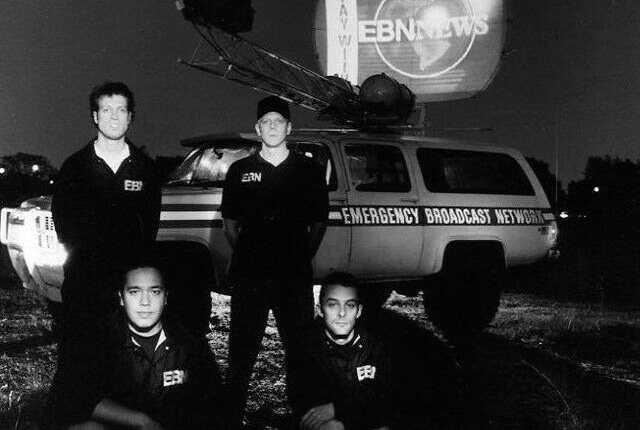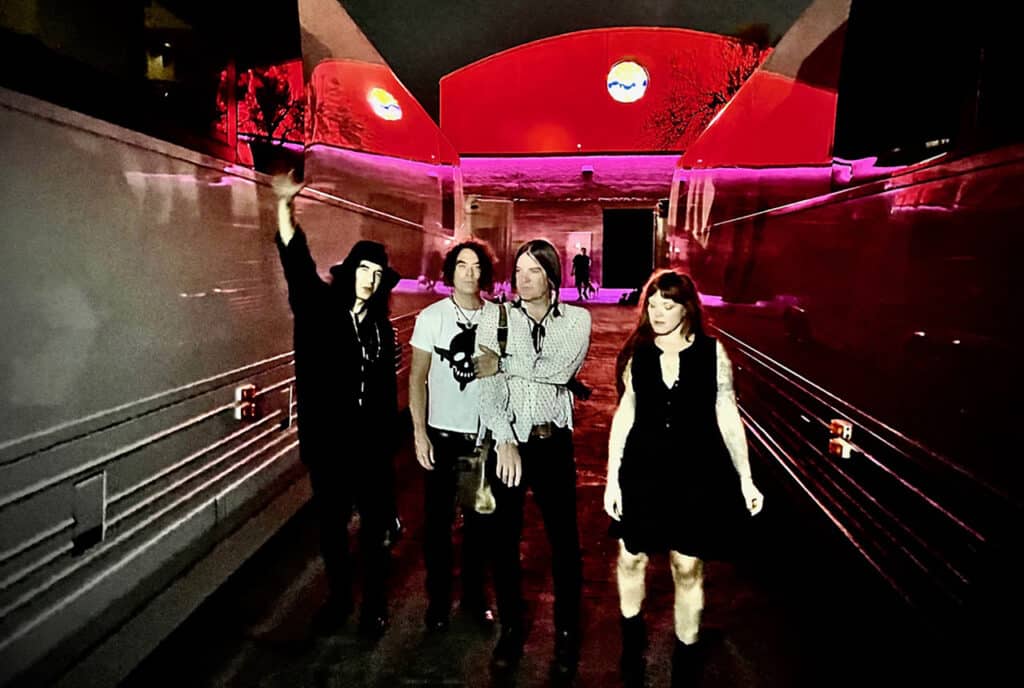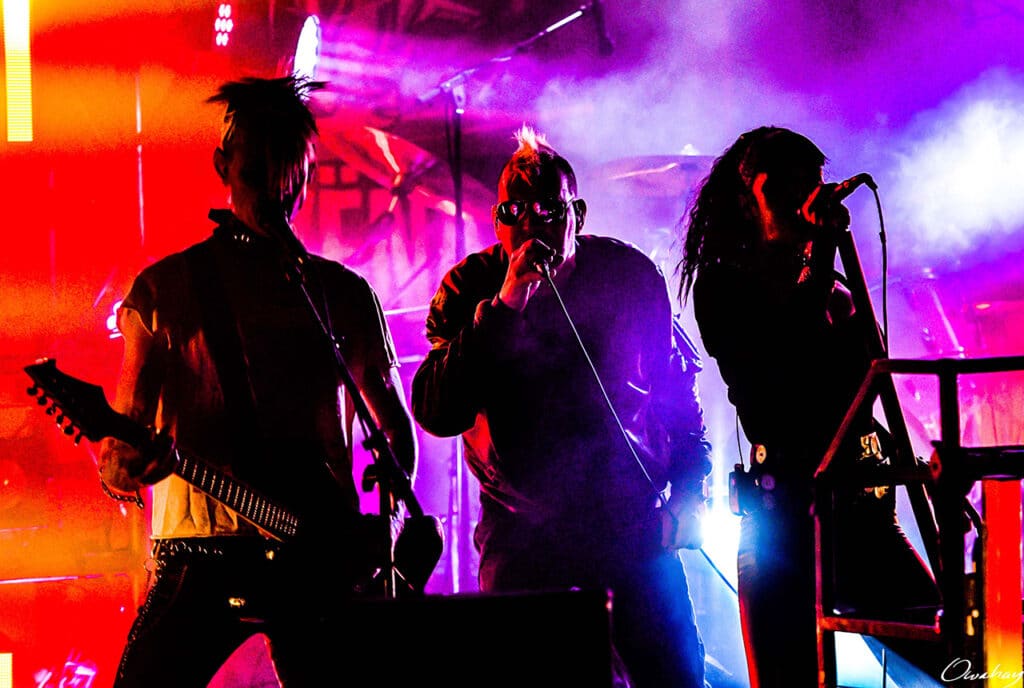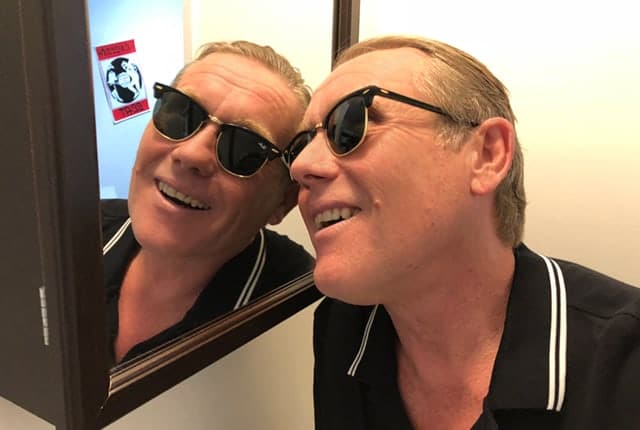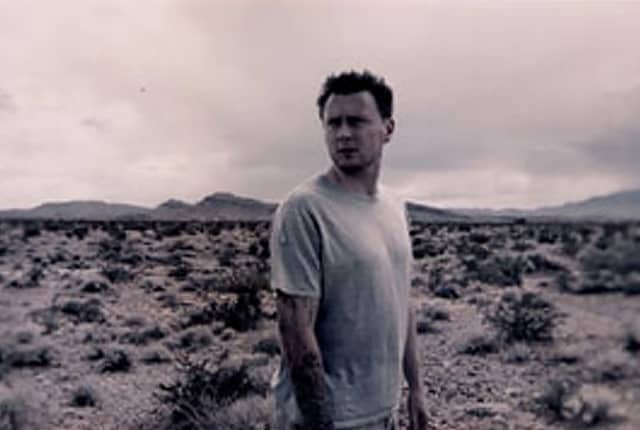When it comes to creating music through sample manipulation, no one has gone as far as Providence’s Emergency Broadcast Network. Utilizing an extensive library of footage recorded off the television, EBN creates elaborate audio/visual compositions are unlike anything ever seen before. In order to fully appreciate what EBN does, you really need to see them live or watch their “Commercial Video Product” home video. But EBN has now entered the audio-only realm with “Telecommunication Breakdown,” their debut album on TVT due out in August.
The core of EBN is made up of Josh Pearson and Gardner Post, who met while attending Rhode Island School of Design. They are also joined by DJ Ron O’Donnell, computer programmer Greg Deocampo and production assistant Tracy Brown.
Initial recording of “Telecommunication Breakdown” was finished in August of 1993, but some tracks were then sent off to Brian Eno and Bill Laswell for remixing. The album versions of those tracks were then re-edited to incorporate some of the elements of the remixes. Once the album was complete, TVT decided to hold the release until this spring to avoid the album coming out in the Christmas rush.
The remixes weren’t planned when EBN first started work on “Telecommunication Breakdown,” but the group is very happy with how it turned out.
“We were both very influenced by Brian Eno’s music, the non-musician’s approach to music, and we were big fans of Bill Laswell,” says Pearson. “Bill Laswell did an interesting thing, he brought in as guest vocalist Melle Mel, of the original Grandmaster Flash and the Furious Five. It’s a very odd addition to the album as a whole, but it was an experimental move on all of our parts. Otherwise, they added some interesting sounds which were then incorporated into finished tracks, and Brian Eno did a very interesting series of remixes which were pleasing to our ears and incorporated into the album versions as well.”
Another famous musician was involved in making the album – Jack Dangers of Meat Beat Manifesto. EBN had met Dangers and hit it off when Meat Beat played in Providence on their last tour. Dangers spent 6 weeks working with them in the summer of 1993.
“He helped us in the pre-production period, where we sat around and did a lot of sampling new audio bits, video bits, and finding some new beats,” explains Pearson. “He also re-sequenced some stuff and helped us change the overall structures of certain songs. We engaged in some on-the-spot remixes of certain tracks. He also was with us for the 3 week recording period.”
“Telecommunication Breakdown,” also features a contribution from Boston’s Institute of Technology. The band did a remix of “Get Down,” and like the Eno and Laswell tracks, elements of it were then incorporated into a re-edit of the album version. The album marks the end of an era for EBN, as they have vastly improved their technology since it was recorded. EBN now have video samplers, which allows them to simultaneously manipulate the audio and video and do “video scratching.”
At the core of the video samplers are Macintosh Quadra 950 computers running software created specially for EBN by Mark Marinello at AVX Design. Audio/video samples can be playing on a keyboard or other MIDI instrument, and the performers are not limited to just triggering loops to start. The pitches of the audio can be controlled, and the sounds can be played backward, bent, and altered in other ways. The system currently allows four minutes of video, made up of many smaller pieces, to be manipulated. New data can be loaded into the computers for each song, and the group will eventually upgrade their system to hold 16 minutes at a time. For EBN, video samplers are making all the difference in the world, as they are the ideal tool for the type of compositions they create.
“We came up with this in kind of a backward way, recreating what it would be like if a video sampler existed,” explains Post. “People thought we had one. This album was produced with our simulation production method, and our next album will be produced using these new techniques. We’re focusing on making the beats out of found video clips, rather than breakbeats or audio sequencer.”
EBN is always looking for ways to experiment with their techniques of audio/video manipulations. Late last year, they did a special Providence show at Lupos where for the first 2 hours the club was open they confused people with a two-hour ambient set. “It put a lot of people to sleep and drove others from the room,” explains Pearson. “But it was an interesting test in multi-playback of a purely ambient loop experience, with no beats.”
The group has been exploring the ambient noises found during the silent moments of their video footage. By looping and otherwise manipulating the subtle audio from these moments, Pearson says they are able to “expose the boundaries between randomness and order, chaos and order.”
Having done videos for U2’s “Zoo TV” tour, EBN is eager to collaborate with others, though they don’t have anything lined up for the immediate future. They had been working on a Nike commercial, but that project fell through. “Telecommunication Breakdown” is in CD Plus format and includes 3 full-length music videos. The group is very eager to do a full-scale interactive CD ROM that will allow anyone to create their own audio/visual compositions.
EBN has performed many times in Providence, Boston, and New York, and plan on touring to support the album. The band sees the live show as an essential part of what they do, and with good reason. Other bands video have screens in the background, but EBN truly interacts with their visuals. A high-tech, rotating podium, equipped with lights and video screens in the centerpiece of the stage. From here, Pearson sings/talks/rants to and along with the performer, politicians, newscasters, and other people snatched from the airwaves and unknowingly made part of the EBN experiences. The best way to describe Pearson’s on-stage persona would say that he resembles a demonic game show host.
EBN is still experimenting with their video samplers, waiting until they have grasped the technology’s full potential before completing new compositions with it. They see their work evolving to incorporate more actual manipulation of the audio/video footage, beyond just cutting it up and re-arranging it in creative ways. In addition, they see themselves working more with simultaneous clips interacting with one another. “I look at the work now as being very collage,” explains Post. “But I see it going in the direction of being heavily montaged and layered up and abstracted.”
